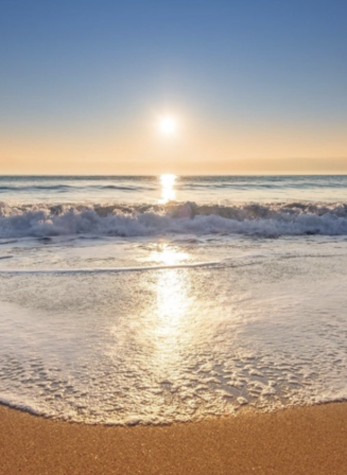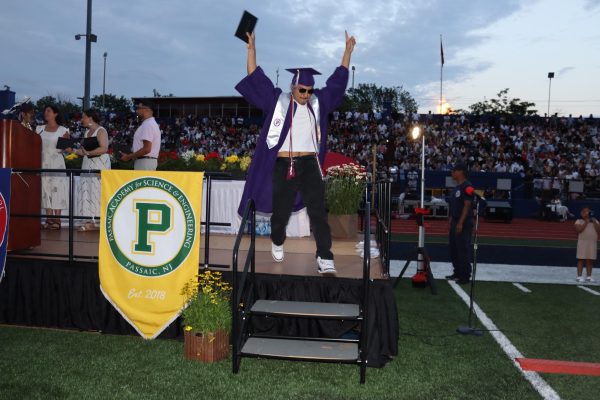Women In Superhero Media: “Sheros” Done Wrong
As a kid, I remember holding my mom’s hand as we walked down the aisles of a store and having my eyes catch images of male superheroes. Wonder Woman was the only heroine around, but she looked ridiculous in her unrealistic costume.
Growing up, I believed that while anyone can be a hero, superheroes could only be men.
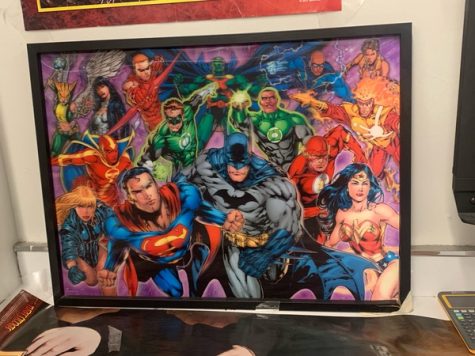
Out of the 34,476 comic book characters in the universe of Marvel and DC – where superheroes are born and nurtured – only 26.7% are female. The numbers are staggering, considering the fact that women are half of the world’s population, yet comic books don’t take women seriously. The small percentage of women is apparent when looking at superhero teams. The amount of male characters compared to females is overwhelming, showing how underrepresented women are. So how are women portrayed in mainstream superhero media?
As of January 2023, there are over 65 live-action superhero movies and shows made since The Adventures of Captain Marvel (1941). Only four female leads in film: Wonder Woman (2017) and Wonder Woman 1984 (2020), Captain Marvel (2019), Black Widow (2021), and Black Panther: Wakanda Forever (2022). Why is that?
Hollywood directors generally have chosen their target audience, one that has catered to boys and men for several decades. By advertising this specific genre to one targeted group, new opportunities are blocked. Creators begin to believe that women aren’t appealing to lead the mainstream superhero genre and that people will not pay to see a film centered around them. The problem with that mindset is that audiences have no problem following a “shero” fight for a cause. Online, people rave about the heroine adaptations that they desire, if the opportunity ever shows up. Writers and executives are the ones responsible for the exclusion of women in superhero media.
Even after decades of comic books, television shows and cinema, female superheroes are unfairly pushed aside. Not only are they rare in number compared to their male counterparts, women in the superhero genre are hyper-sexualized and stereotyped.
James Alessi teaches Passaic Prep’s Legal Studies Pathway and is a lifelong superhero and comic fan.
“Women were rarely the heroes of comic books or films,” he said. “They were there to be saved. … Or they were witches, evil queens, old crones, or some other version of a nasty woman. It was a way to show the world that women were always inferior to the hero in some way.”
In the comic universe, males are drawn with popping abs, being skinny, having a dad-bod, or looking average. Female drawings show a different story. Women in comic books overwhelmingly lack diversity in their appearance. Just by looking at their face or body types, it often looks like artists blatantly copy looks from each other. Many characters end up looking identical.
Juan Meneses, Passaic Prep senior in the Video Production Pathway, pointed out how comics make women identical in their appearance.
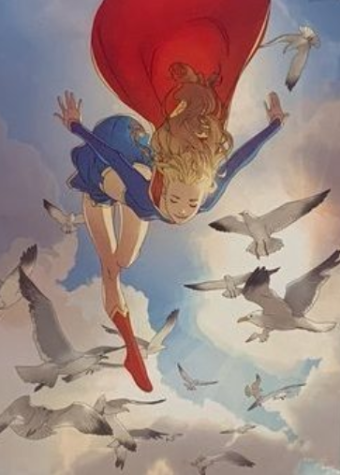
“Not to be mean, but all of the female characters look the same at this point! The male characters get a good amount of variety,” he said. “There’s the twinks, the lanky ones, the buff ones, the very buff ones, and the ones that kind of look like normal people—there’s a massive variety, but all of the female superheroes just look the exact same and that’s really annoying.”
Even in the few cases where a woman looks different, it is not always consistent. For example, She-Hulk is buffed up with muscles and is six-foot-seven! She’s depicted as strong, tough and a great jumper—a shattering image that steers away from stereotypical female attributes in comic books. The only issue with the character surprisingly isn’t in the comics, it’s in her Disney+ show, She-Hulk (2022-), where she appears surprisingly lean instead of being buff. This enforces stereotypes that the She-Hulk comics fervently fought against, especially since the character is supposed to positively promote masculine body types for women.
“[Women] need to get way buffer, I will die on this hill!” exclaimed Juan. “Why would you be scared to do that? That just makes them look way more powerful and cool.”
Many women have been limited to a specific role: Being a male’s love interest. Instead of utilizing her strength to show girls that they can be strong and independent as individuals, females are usually portrayed as weak and needing a man to save them.
Gabriella Crocco is a high school history teacher at Passaic Prep and a Marvel fan.
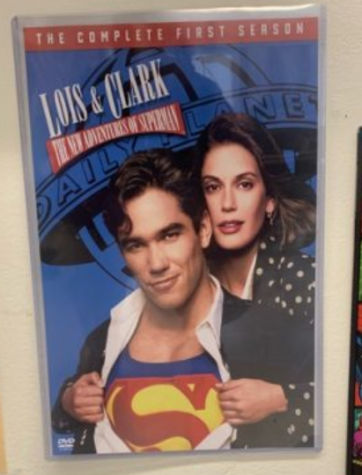
“There are two different ways that women are portrayed in superhero comics and films,” she said. “The first way is the typical ‘damsel in distress’ where the woman has a conflict that the strong macho man (typically the superhero) needs to save her from.” She added that “the second way is that the woman is a superhero herself and typically saves the day. There are some comic books/story lines where the woman does not need a macho man to save the day because she has the power to do it herself.”
In Sam Raimi’s Spider-Man trilogy, Peter Parker’s love interest, Mary Jane Watson, is fed into the damsel-in-distress trope. In all three of the films, she is repeatedly kidnapped and put into dangerous situations by Spider-Man’s villains. The reason? For Spider-Man to come to her rescue again. And again. It’s a never-ending cycle that’s used to push Peter Parker’s character development, while M.J. is pushed aside in favor of her male counterpart. Spider-Man (2002) opened by talking about how “like any story worth telling, this one is about a girl.” However, that girl was given little to nothing for herself. Throughout the trilogy she barely held a character arc of her own, other than to push Peter from one emotional state to the other. Her appearances are mainly used for plot purposes, from straining Peter and Harry Osborn’s friendship to being villain-bait. Even the times where M.J. did something for herself, such as modeling or acting, her choices centered on how Peter would react, or ignore her. Even actor Tobey Maguire, Spider-Man himself, once commented that “it’s nice [and] it adds dimension to his character.” Her character came across more as being a fantasy for Peter Parker than actually being her own independent self.
Unlike most male superhero projects, heroine leads don’t follow those love interest tropes. Unlike the term “damsel in distress,” there isn’t a popular term that is used for the male gender, showing the rarity of having a man be chased whenever a heroine is the one fighting a villain. One of the only known examples of villains going after a boyfriend is in the Marvel Cinematic Universe (MCU) Disney+ show, Ms. Marvel (2022-). Bruno Carelli is Kamala Khan’s, aka Ms. Marvel, love interest/best friend who fell into trouble with evil organizations and was attacked. This conflict lasted shortly as Ms. Marvel quickly went to protect her loved ones and community. As for heroine films, none held any notable love interests for supervillains to go after. Look at the example below.
Women are commonly objectified in various forms of superhero media. Natasha Romanoff, aka Black Widow in the MCU, is a good example of this. Despite being a talented spy and former assassin who has years of comic book existence and a decade of live-action adaptations, Black Widow was repeatedly shunned from solo live-action projects. In addition to the limitations surrounding her role, Black Widow was sexualized from the start, from being drawn suggestively in comic covers to being objectified in the early MCU films. It all relates to the male gaze of Hollywood. Executives didn’t see the value of Natasha being a superhero on her own, and some fans only viewed her as a sex symbol. It’s a shame that Natasha Romanoff’s story was undermined and not seen as important until after her demise.
Dayanara Lopez, Passaic Prep senior in the Video Production Pathway, highlighted Black Widow’s ridiculous crime-fighting costumes.
“For Black Widow, Scarlet Johansson was put in this costume that was so uncomfortable,” Dayanara said. “Literally she couldn’t go to the restroom. It was so uncomfortable for her but [the executives] were like ‘you know what, here.’ And all the fandoms were like ‘Oh my god, she’s so sexy.’ And then you have her literally suffering on screen, and for what?”
Despite being sexualized as a woman, Black Widow eventually grew into a symbol of strength and female empowerment, opening a gateway for more heroine representation in the mainstream superhero genre.
Black Widow isn’t the only superheroine who suffered from the male gaze. The list of names is extremely long. Wonder Woman, one of the world’s most famous heroes, also has a complicated history, one mixed with sexualization and feminism. She’s normally shown wearing small, uncomfortable outfits in the midst of battles. It’s unfathomable to think that someone can wear such a tiny outfit and fight without feeling uncomfortable or having the fear that your clothes are going to fall off.
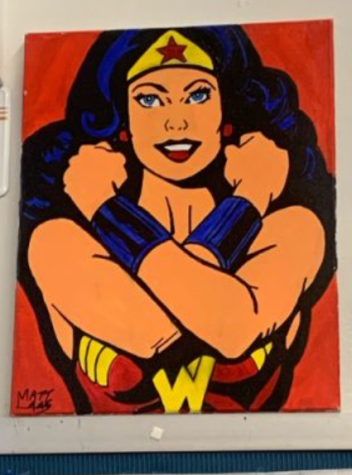
“Even in these early comics, Wonder Woman was often subjected to degrading capture sequences.… Seriously look it up, it’s quite shocking by today’s more rational standards,” said Mr. Alessi. “However, I will never take away from the impact of Wonder Woman on the world as finally being a strong woman.”
While there are some projects in which females were represented well, they often come with flaws. In Patty Jenkins’ Wonder Woman (2017), Wonder Woman’s costume is a slightly unaddressed issue. Despite her growing up on Themyscira (a secluded, all-woman island), Wonder Woman is dressed in short attire, just like in the comics. From 1941-47, William Moulton Marston and Harry G. Peter originally created Wonder Woman’s costume in order to appeal to the male readers of their time. Although sex sells, times have changed. It’s degrading for superwomen to act only as sex symbols when they have more to give. Why is it normalized that new generations of superhero fans grow up seeing female heroes fight wearing small outfits while male heroes are fully covered? No matter who they are or what they look like, they’re fighting for the same cause and there’s no need for anyone to be sexualized. Captain America wears a helmet and holds a shield, Superman wears a cape, but Wonder Woman is required to wear a tiny dress.
Recent years have shown that women can be represented positively. More female-lead cartoons and live action shows are being produced and positively received by fans. There’s more exposure on female characters, allowing for their featured comics to be represented and consumed more. No longer are women subjected to blatant sexism or sexualization, they are heroes, too. Recently, Marvel Studios has actively been working on more representation in their films and showing care and delicacy in approaching females. The Scarlet Witch, Black Widow, Captain Marvel, Supergirl and more recently, the Black Panther, have shown the evolution of female characters. In less than five years, many female superhero costumes have become desexualized.
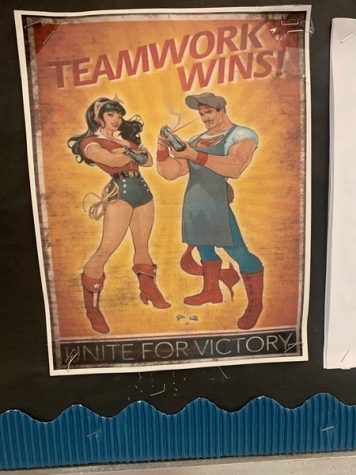
Despite the outfit controversies, Wonder Woman (2017) sets an example on how female superhero stories can be written well. Throughout the film, the audience followed Diana Prince, better known by her alias Wonder Woman, on the journey from childhood to adulthood, watching her train and struggle with understanding human nature. Her story was inspiring, from her training to fight as a young girl to learning about the evil side of humanity when witnessing World War I. She was written with good development, allowing her character to be fleshed out. This is a positive way to portray women in superhero films. Wonder Woman was able to fight against sexism from powerful men and stood on her own to be taken seriously. There was no need for her to be pushed aside in favor of her male counterparts—she was a leader on her own. This storytelling is the kind of representation that needs to lead the superhero genre.
People often hold double standards for hero gender. There are groups who detest the female Captain Marvel for her “cocky” attitude and confidence, but they are the same ones who adore Tony Stark’s similar personality in the Iron Man series. That mindset doesn’t make sense when both characters share the qualities of pride and like to say they are “defining” themselves. There is a difference between not liking how a story is written and hating a female character who holds similar “male” qualities. Any gender can be confident with themselves and still be loved by others; they’re human either way.

Recently, more superwomen have taken the lead in television shows. Primary examples include Supergirl (2015-21), Jessica Jones (2015-19), Batwoman (2019-22), and WandaVision (2021). Black Panther: Wakanda Forever (2022) also took a huge leap in having a primarily female-led cast, grossing over $840 million USD at the box office! Because of these improvements, the list of female characters, their stories and perspectives are increasingly growing in both the publishing and film industry. Marvel Studios, being a powerhouse in both the superhero genre and at the box office, has been doing a great job in adding more diverse stories and giving more opportunities for women to lead.
As more of these opportunities become available, Hollywood will take a huge leap in representation, which will trickle down to pop culture, helping change negative stereotypes that society often holds against women. Little girls will have more representation and role models. If someone comes up to them and asks to name a female superhero, their answers won’t be limited to Wonder Woman and Captain Marvel because those are the only names that they know. Now there are more options for both boys and girls to choose from, heroes and anti-heroes that are diverse in their gender, race, appearance, and personality.
As positive female representation remains largely unexplored, there is more room for growth. As the universes of Marvel and DC continue to expand, let’s hope that they remain diligent with their portrayal of women, allowing for more female characters to appear on screen without gender issues. As more of these stories come out, it’s exciting to see the changes that’ll string alongside them. More “sheros” equals more female power and confidence, and I cannot wait to see what’s in store for upcoming female stories.

